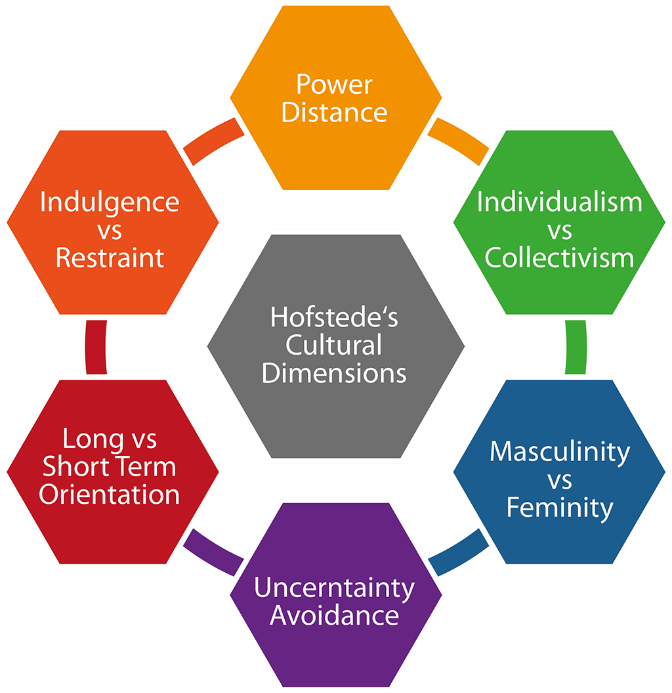
Harnessing Hofstede’s Cultural Dimensions Model for Organizational Success
As the world becomes increasingly interconnected, organizations engage with a diverse array of cultures. This expansion, while offering immense opportunities, also presents unique challenges, particularly in understanding and navigating cultural differences. These differences, if not managed effectively, can become roadblocks to international success. Hofstede’s Cultural Dimensions Model serves as a critical tool for organizations to successfully operate in the global arena. By harnessing the power of Hofstede’s model, organizations can gain a strategic edge, successfully traversing the complex cultural landscapes of the global business environment

Decoding Hofstede’s Cultural Dimensions Model
To begin, let’s delve into the theoretical underpinnings of Hofstede’s Cultural Dimensions Model. Developed by renowned Dutch social psychologist Geert Hofstede, this model provides a comprehensive framework for understanding cultural differences, identifying six dimensions that describe a culture:
- Power Distance Index (PDI): This dimension measures the degree to which less powerful members of organizations and institutions accept and expect power to be distributed .
- Individualism vs. Collectivism (IDV): This dimension explores the extent to which individuals in a society are integrated into groups.
- Masculinity vs. Femininity (MAS): This dimension examines the distribution of roles between genders in a society.
- Uncertainty Avoidance Index (UAI): This dimension expresses the level of discomfort members of a society feel with uncertainty and ambiguity.
- Long-Term Orientation vs. Short-Term Normative Orientation (LTO): This dimension describes how societies balance maintaining links with their past while dealing with the challenges of the present and future.
- Indulgence vs. Restraint (IVR): This dimension is related to the extent to which societies allow gratification of basic human drives related to enjoying life and having fun.
The Significance of Hofstede’s Model for Organizations
Hofstede’s Model provides a systematic framework for understanding and comparing cultural norms and values, equipping organizations with the knowledge to comprehend the cultural contexts in which they operate. This understanding is crucial in developing strategies that are culturally sensitive and effective, thereby avoiding misunderstandings, conflicts, and failures that can arise from cultural differences.
Now that you understand the model, how do you use it? Let’s explore best practices for applying the model:
- Training and Development: To design culturally appropriate training programs, start by conducting cultural assessments to understand the dominant cultural dimensions within your organization. Tailor the content and delivery methods to align with the cultural values and preferences of employees. For example, if your organization has a high Power Distance Index (PDI), incorporate hierarchical structures and authority figures in training materials.
- Leadership and Coaching: Adapting leadership styles to the cultural context is essential for effective leadership. Leaders should invest time in understanding the cultural dimensions of their team members and adapt their communication and decision-making processes accordingly. For instance, leaders operating in cultures with high Uncertainty Avoidance Index (UAI) should provide clear guidelines and structured approaches to minimize uncertainty.
- Employee Engagement: To develop engagement strategies that resonate with the cultural values of employees, foster an inclusive and participatory culture. Encourage open communication, active listening, and recognition of diverse perspectives. Adapt recognition and rewards programs to acknowledge cultural preferences. For example, in collectivist cultures (high on the Individualism vs. Collectivism dimension), consider team-based incentives rather than individual rewards.
- Diversity and Inclusion: Build a culture that celebrates and embraces diversity. Establish diverse hiring practices, ensuring representation from various cultural backgrounds. Encourage cross-cultural collaboration and create platforms for employees to share their cultural experiences and perspectives.
Hofstede’s Cultural Dimensions Model is not just a theoretical construct; it’s a practical tool that can be leveraged by organizations to navigate the complex cultural landscapes of the global business environment. By understanding and effectively applying this model, organizations can foster a more inclusive work environment, design culturally sensitive strategies, and achieve greater success in their international ventures.
How is your organization currently addressing cultural differences? Could Hofstede’s Model provide new insights and strategies to enhance your organization’s cross-cultural competence and effectiveness? Leave a comment below, send us an email, or connect with us on Twitter.

